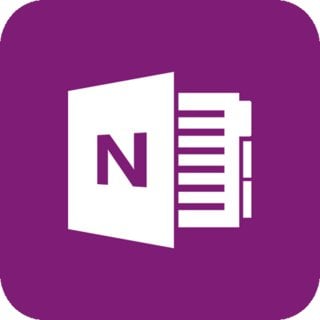

First off, I cannot fathom why the notebook management feature is so poor. This is what makes OneNote - and other similar apps - a powerful tool. So, if you use the company's cloud storage service for notes, that content will also be available in the OS X app, if you choose to log in with the respective Microsoft account. OneNote for OS X, like its siblings on other platforms, integrates with the note-taking service Microsoft includes in OneDrive.

There is also another part of OneNote, which I have yet to mention. I have no doubt Microsoft will add features in the future, to better match what Evernote tots on the platform. This is pretty much what every OneNote user will see in the OS X app, at least in this release. Nothing fancy here, but also nothing that is difficult to understand and use. Lastly, View reveals the controls for zooming and a page color menu. Insert is the tab which provides access to a table creator, inserting photos, date, and date and time indicators. The tag is indicated by a small pictogram to the left of the text. Microsoft includes quite a few of them, pre-defined, which can be used to (obviously) tag bits of the note, like phone numbers and contact names. Tags is one of the most interesting features - well, more so than the font size and type menu - OneNote offers. In my case, I could immediately adjust to them. The icons are intuitive enough for someone who has used Microsoft Office or similar products. It provides easy access to commonly-used settings like the font type and size, headings, tags as well as copy and paste. As the tabs are the gateway to OneNote's features, I have decided to discuss them in a separate section, to focus more on what they bring to the table. There are just three tabs in the first release, which take you to the Home, Insert and View menus. The tabbed layout that Microsoft introduced in Office 2007 (and in later versions of the suite) is used in OneNote for OS X as well. I even prefer it to Evernote's layout, which is not as well designed it feels more cumbersome.

For me, everything is laid out in a logical manner. I would not call the way OneNote works immersive, as the interface does not really get out of the way, but you can sure focus on composing notes and not searching for where things are. On the right of the OneNote window is the list of notes - Microsoft names them pages. There is a main bar with a dropdown menu for selecting the notebook, and next to it are the sections tabs - chapters, if you will - of the active notebook. Navigating notebooks is logical and easy to get used to, which are no small feats in my book (no pun intended). The app looks clean, easy to use and is enticing enough to use for a prolonged period of time (unlike Office 2011 for Mac, which is stuck in. Straight off the bat, I have to say the design of OneNote for OS X is impressive. So, I have decided to give it a chance on my MacBook Air to see if it is good enough to actually replace Evernote.
#EVERNOTE VS ONENOTE FOR MAC FREE#
As you may know by now, Microsoft just launched OneNote for OS X, and for free! The app is now free on Windows as well, complementing the existing Modern UI offering and the full-blown OneNote that is part of Office.Īs a result, I can now use OneNote on every device I own.


 0 kommentar(er)
0 kommentar(er)
